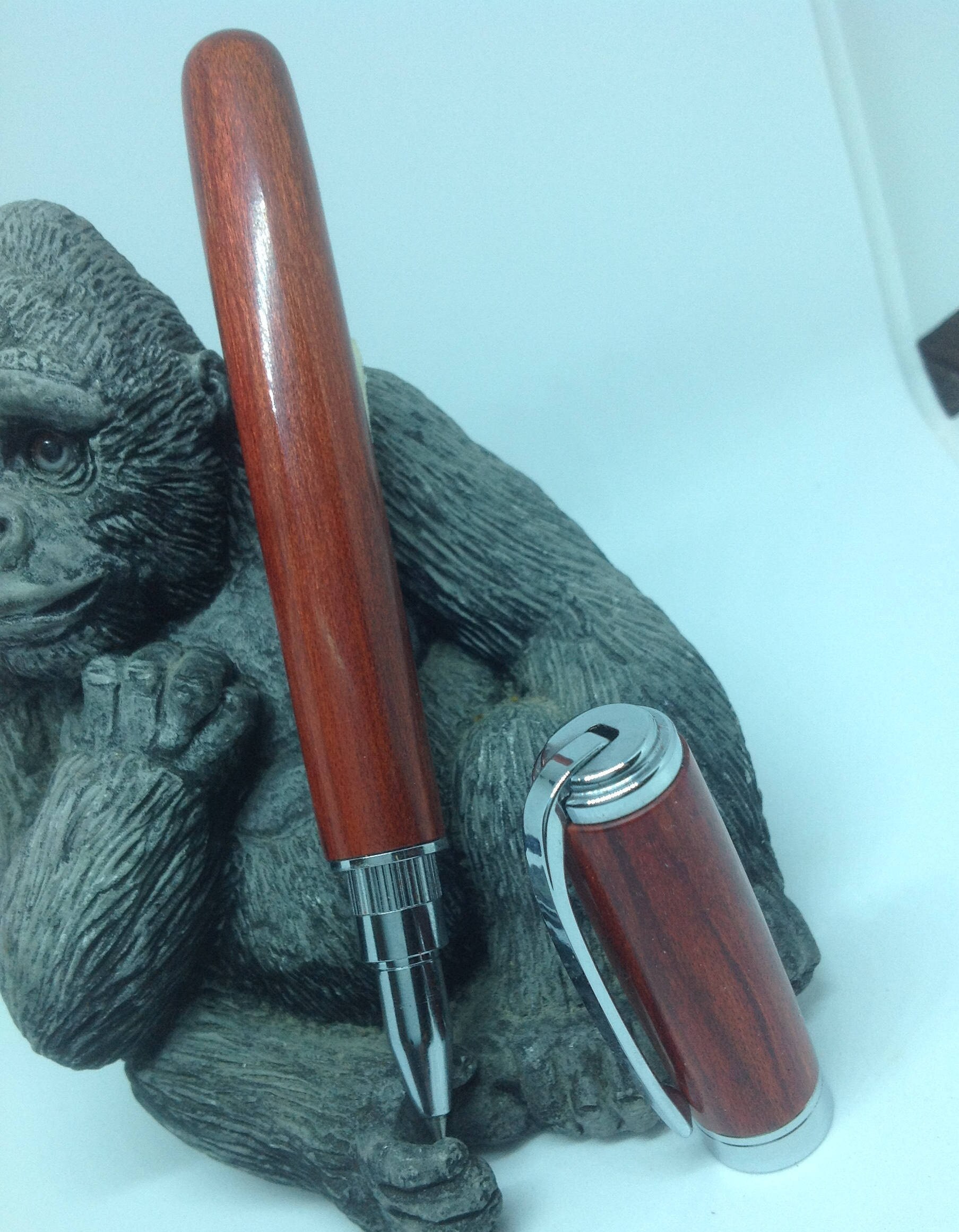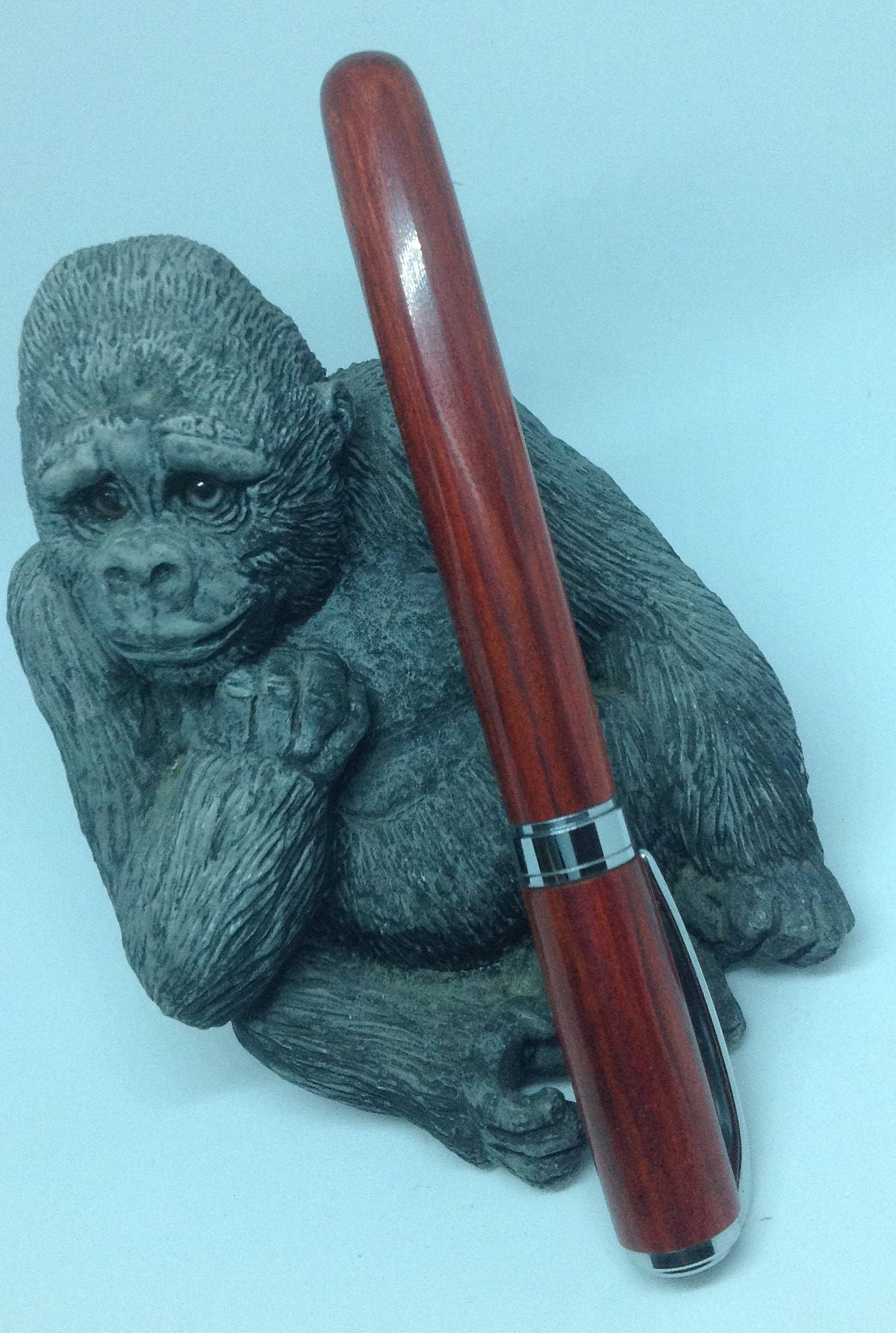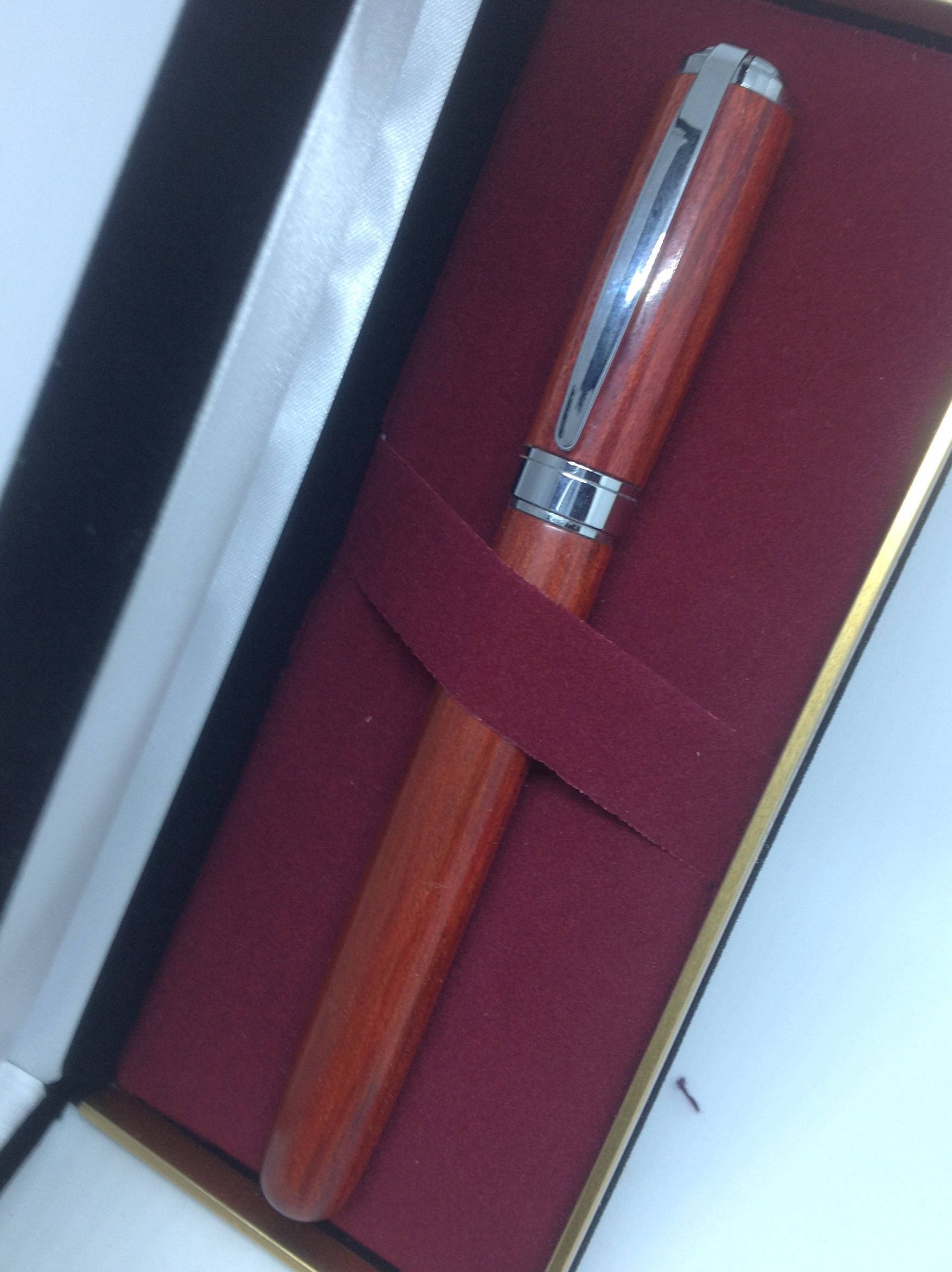Closed Ended Red Heart Custom Magnetic Graduate Two Piece Pen with Chrome Trim (#1752)
$49.50
This stylish and stately writing instrument includes a captivating magnetized cap. The cap posts instantly and securely on both ends of the pen, the long barrel provides a solid feel and smooth writing experience. Features a convenient spring clip, an elegant profile with a wider top and narrower bottom. This is a great gift for anyone that you love or for yourself and comes in a gift box and takes a standard Schmidt roller ball refill.
REDHEART
LATIN: Erythroxylum spp. and Simira spp.
ORGIN: Southern Mexico to southern Brazil and Paraguay
Color/Appearance: Aptly named, in some instances freshly surfaced Redheart can be a very bright, watermelon red—though color can vary in intensity and hue from board to board: anywhere from a light orange/pink, (similar to Pink Ivory), to a darker brownish red. In some cases, it can look quite similar to Bloodwood, though usually with a more visible and figured grain pattern. Redheart’s vibrant color quickly fades to a reddish brown in direct sunlight, though this color change can be slowed (but usually not stopped entirely) by using a finish with UV inhibitors and keeping the wood away from strong lighting.
Grain/Texture: Grain is usually straight or irregular, with a fine, even texture. Low to medium natural luster.
Workability: Redheart has good working characteristics, and planes, machines, and sands well. Turns, glues, and finishes well, though a brown color shift is to be expected.





